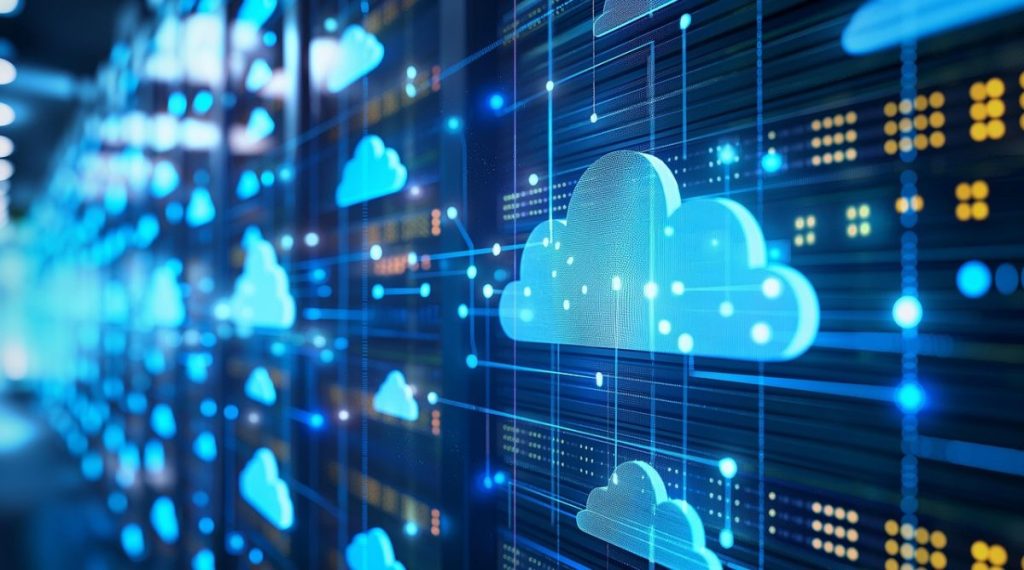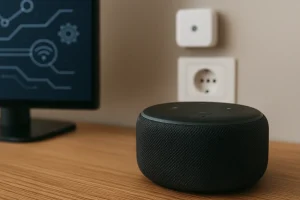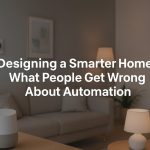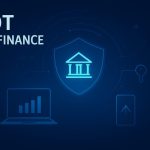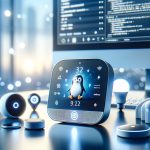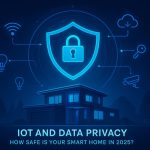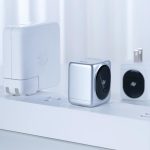As the Internet of Things (IoT) expands rapidly across industries, the amount of data generated by sensors, devices, and machines is skyrocketing. To make sense of this data, artificial intelligence (AI) is increasingly deployed in IoT environments. But not all AI is created equal. Two distinct approaches have emerged: Edge AI and Cloud AI. Each has its strengths, limitations, and ideal use cases. Understanding the differences is essential for businesses building scalable, efficient, and responsive IoT systems.
What Is Cloud AI?
Cloud AI refers to artificial intelligence models and analytics that run on centralized data centers or cloud platforms. Data collected by IoT devices is sent to the cloud, where it’s processed and analyzed using powerful computational resources.
Key Features of Cloud AI:
- High computing power and scalability
- Centralized model training and updates
- Integration with cloud services and APIs
- Accessible from anywhere via the internet
Common Cloud AI Platforms:
- Amazon Web Services (AWS) AI
- Microsoft Azure AI
- Google Cloud AI
- IBM Watson
Use Case Example: In smart agriculture, drones capture aerial images which are uploaded to the cloud for crop health analysis and yield predictions.
What Is Edge AI?
Edge AI processes data directly on or near the IoT device, such as on a sensor, embedded board, or local gateway. Rather than sending all data to the cloud, only essential or summarized information is transmitted.
Key Features of Edge AI:
- Low latency decision-making
- Reduced bandwidth usage
- Better data privacy and security
- Operates even without internet connectivity
Typical Edge AI Hardware:
- Raspberry Pi or NVIDIA Jetson Nano
- Specialized AI chips like Google Coral or Intel Movidius
- Industrial edge gateways with AI acceleration
Use Case Example: In smart factories, edge AI monitors vibration data from motors in real-time to detect anomalies and trigger immediate shutdowns before a failure occurs.
Head-to-Head Comparison
| Feature | Cloud AI | Edge AI |
|---|---|---|
| Latency | High (due to network delay) | Low (local processing) |
| Connectivity | Requires constant internet | Works offline |
| Data Privacy | Lower (data leaves device) | Higher (local processing) |
| Compute Power | High (scalable resources) | Limited (device-bound) |
| Update Flexibility | Easy centralized updates | Requires physical or OTA updates |
| Cost | Potentially high (bandwidth, storage) | Lower operational cost over time |
Why the Choice Matters in IoT
The performance and viability of an IoT solution can hinge on whether it uses edge or cloud AI. Here’s why the decision is critical:
1. Real-Time Decision Making
For applications like autonomous vehicles or industrial safety systems, delays of even milliseconds matter. Edge AI offers instant feedback.
2. Scalability and Management
Cloud AI allows rapid model deployment across thousands of devices. It’s ideal for training large AI models that require massive datasets.
3. Network Efficiency
Edge AI reduces the amount of data sent over networks, saving bandwidth and lowering latency.
4. Data Governance
In regulated industries like healthcare or finance, Edge AI enables local data handling to meet compliance requirements.
Hybrid Approach: Best of Both Worlds
Many IoT systems today combine Edge and Cloud AI for optimal performance. This is called a hybrid AI architecture.
How It Works:
- AI models are trained in the cloud
- A lightweight version of the model is deployed to edge devices
- Edge devices process data locally and send alerts or summaries to the cloud
- The cloud aggregates and retrains the model periodically
This approach balances performance, cost, and scalability.
Real-World Examples
Smart Cities
- Cloud AI: Traffic pattern analysis across an entire city
- Edge AI: Smart traffic lights that adjust signals based on live vehicle flow
Healthcare Devices
- Cloud AI: Analyzing trends in millions of patient records
- Edge AI: Wearable monitors detecting abnormal heart rates instantly
Retail
- Cloud AI: Customer behavior analytics across all stores
- Edge AI: In-store cameras detecting shoplifting or shelf depletion in real time
Challenges and Considerations
For Cloud AI:
- Latency and reliability issues in remote areas
- Higher data transmission costs
- Greater attack surface for security breaches
For Edge AI:
- Limited processing capabilities
- Complex firmware and model updates
- Difficult to manage at scale without orchestration tools
Final Thought
Edge AI and Cloud AI are not rivals, but complementary tools. Choosing between them—or combining both—depends on your IoT project’s goals, infrastructure, and constraints. As AI chips become more powerful and networks like 5G become widespread, the line between edge and cloud will continue to blur. But the key takeaway remains: the closer the intelligence is to the action, the smarter and faster your IoT solution becomes.
FAQ: Edge AI vs Cloud AI in IoT
What is the main advantage of Edge AI in IoT?
Edge AI allows real-time decision-making and reduces dependency on internet connectivity by processing data locally.
Is Cloud AI obsolete if Edge AI is used?
Not at all. Cloud AI is crucial for centralized data aggregation, model training, and large-scale analysis.
Can IoT devices switch between Edge and Cloud AI?
Yes, many systems use a hybrid approach where critical data is processed on the edge while larger analytics are handled in the cloud.
Which is more secure: Edge AI or Cloud AI?
Edge AI offers better data privacy as sensitive information can be processed locally, but both approaches require strong security measures.
What industries benefit most from Edge AI?
Industries requiring low-latency responses, such as manufacturing, automotive, healthcare, and energy, benefit significantly from Edge AI.

MocaccinoOS – A New Breed of Modular Linux, Powered by Containers
- Designing a Smarter Home in 2026: What People Get Wrong About Automation
 Smart homes were once science fiction, but today they’re a reality in millions of households. With voice assistants, smart plugs, and automated lighting systems, it’s easy to assume home automation is simply a matter of plugging in a few devices. Yet, many homeowners quickly discover that “smart” doesn’t always mean simple. In this article, we’ll…
Smart homes were once science fiction, but today they’re a reality in millions of households. With voice assistants, smart plugs, and automated lighting systems, it’s easy to assume home automation is simply a matter of plugging in a few devices. Yet, many homeowners quickly discover that “smart” doesn’t always mean simple. In this article, we’ll… - Automated Online Trading: How IoT is Redefining Financial Markets
 Introduction automated online trading In a world where milliseconds can decide millions, the fusion of Internet of Things (IoT) technology and automated online trading is reshaping global finance. What once relied solely on human judgment now increasingly depends on connected machines, real-time data, and predictive algorithms. From weather sensors influencing agricultural trades to smart logistics…
Introduction automated online trading In a world where milliseconds can decide millions, the fusion of Internet of Things (IoT) technology and automated online trading is reshaping global finance. What once relied solely on human judgment now increasingly depends on connected machines, real-time data, and predictive algorithms. From weather sensors influencing agricultural trades to smart logistics… - The Role of Linux in IoT: Powering the Connected World
 The Internet of Things (IoT) is everywhere—from smart homes and wearable devices to industrial automation and self-driving cars. Behind the scenes, one operating system plays a surprisingly dominant role: Linux. Known for its stability, flexibility, and open-source nature, Linux has become the backbone of countless IoT devices and platforms. But what makes Linux so well-suited…
The Internet of Things (IoT) is everywhere—from smart homes and wearable devices to industrial automation and self-driving cars. Behind the scenes, one operating system plays a surprisingly dominant role: Linux. Known for its stability, flexibility, and open-source nature, Linux has become the backbone of countless IoT devices and platforms. But what makes Linux so well-suited… - The Smart Home Revolution in 2025: How IoT is Transforming Everyday Living
 In the past decade, the vision of a truly smart home has moved from futuristic fantasy to everyday reality. As we step into 2025, the Internet of Things (IoT) has matured into a robust ecosystem, connecting appliances, security systems, lighting, and even entertainment devices under one seamless digital roof. The result? Homes that are safer,…
In the past decade, the vision of a truly smart home has moved from futuristic fantasy to everyday reality. As we step into 2025, the Internet of Things (IoT) has matured into a robust ecosystem, connecting appliances, security systems, lighting, and even entertainment devices under one seamless digital roof. The result? Homes that are safer,… - IoT and Data Privacy: How Safe Is Your Smart Home in 2025? – IoT Security
 The smart home revolution has made everyday life more convenient than ever. From voice assistants that control the lights to security cameras that send alerts directly to your phone, connected devices have become part of our daily routines. But with this convenience comes an important question: how safe is your personal data in a world…
The smart home revolution has made everyday life more convenient than ever. From voice assistants that control the lights to security cameras that send alerts directly to your phone, connected devices have become part of our daily routines. But with this convenience comes an important question: how safe is your personal data in a world…
